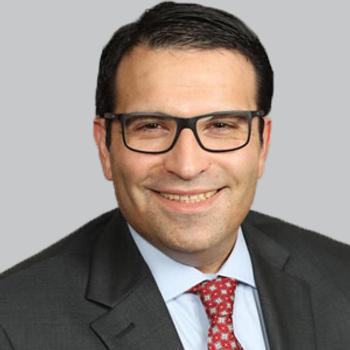
Expanding the Migraine Treatment Protocol Beyond CGRPs: Emad Estemalik, MD

The director of the headache section at Cleveland Clinic detailed some of the emerging nonpharmacological preventive methods for migraine, as well as where research is headed following the explosion of CGRP-targeting therapies. [WATCH TIME: 6 minutes]
WATCH TIME: 6 minutes
"I'm a firm believer that you can't fix it with a pill or an intervention when you don't address everything else. Our colleagues who do a lot of mental health intervention talk often, rightly so, about the biopsychosocial approach for patients. Again, it is our role as physicians to see it through, this interdisciplinary lens for any neurologic illness that we manage."
Since the early 2000s, the treatment of migraines was primarily focused on relieving symptoms rather than addressing the underlying causes. Clinicians would typically use pain relievers such as aspirin, acetaminophen, and ibuprofen, along with other types of ergotamines, anti-nausea medications and preventives, like beta-blockers, tricyclic antidepressants, and anticonvulsants, among others. Additionally, toward the late 20th century, triptans, agents that targeted serotonin receptors, were introduced.
Currently, FDA-approved drugs acting on the calcitonin gene-related peptide (CGRP), or its receptor, are those used in the treatment or prophylaxis of migraine. This group includes monoclonal antibodies such as erenumab, eptinezumab, galcanezumab, and fremanezumab that act against the CGRP receptor and CGRP receptor antagonists like rimegepant and ubrogepant. Despite the proven efficacy and safety of this class of therapies, the element of nonpharmacological intervention and lifestyle modifications remains critical to treatment, says
Estemalik, director of the headache section at
Newsletter
Keep your finger on the pulse of neurology—subscribe to NeurologyLive for expert interviews, new data, and breakthrough treatment updates.


































